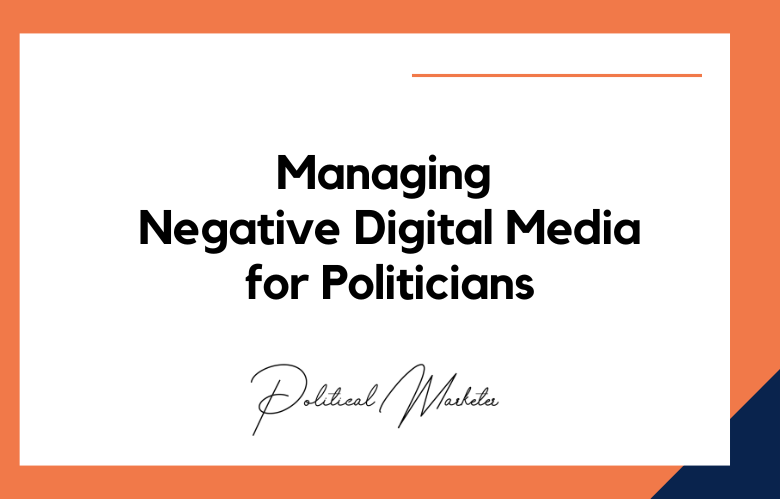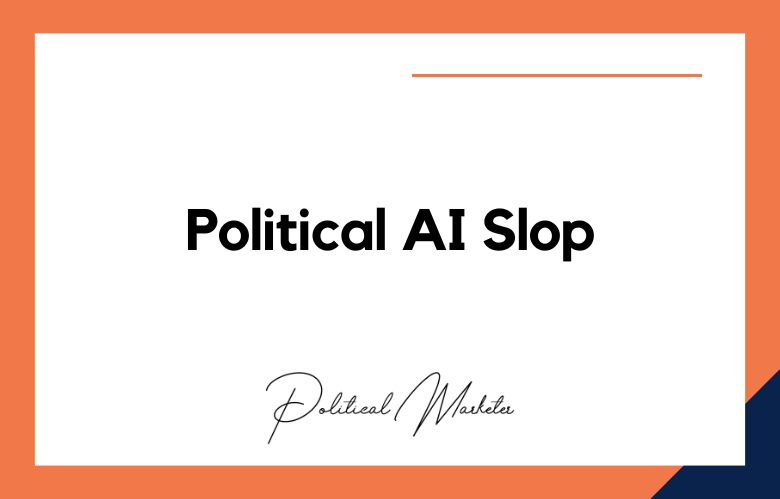In the digital era, politicians must adopt highly sophisticated strategies to manage negative digital media effectively.
Leveraging advanced tools, technologies, and methodologies can transform challenges into narrative control and public engagement opportunities.
Advanced Monitoring and Sentiment Analysis
Tools and Platforms:
- Social Media Listening: Tools like Brandwatch, Talkwalker, and Sprinklr provide in-depth social listening and sentiment analysis.
- AI-Powered Monitoring: Natural Language Processing (NLP) algorithms in tools like Lexalytics or MonkeyLearn can detect nuanced sentiments in real time.
- Custom Dashboards: For comprehensive insights, build real-time analytics dashboards using platforms like Tableau or Power BI, which are connected to APIs from social media platforms.
Technical Approach:
- Sentiment Scoring: Machine learning models analyze text and assign sentiment scores (positive, negative, or neutral).
- Topic Clustering: Employ unsupervised learning techniques (e.g., Latent Dirichlet Allocation) to group public discussions into topics for targeted responses.
- Event Detection: Implement event detection algorithms using time-series analysis to identify spikes in negative sentiment, signaling emerging crises.
Crisis Response Framework
Real-Time Engagement:
- Chatbots for Rapid Responses: Deploy AI-driven chatbots on social media platforms to answer common questions and provide clarifications in real-time.
- Automated Alerts: Use tools like IFTTT or Zapier to automate notifications for specific keywords or phrases, enabling immediate response planning.
Decision Trees for Escalation:
- Tiered Response Models:
- Tier 1: Minor concerns – Address with pre-approved templates.
- Tier 2: Misinformation – Deploy detailed fact-checking and corrective messaging.
- Tier 3: High-impact issues – Escalate to human experts for tailored responses.
- Integrate decision trees into CRM systems like Salesforce to streamline escalation workflows.
Technical Execution:
- API Integration: Connect monitoring tools with response platforms to streamline issue detection and response.
- Data-Driven Messaging: Use A/B testing on response drafts to evaluate public reactions before finalizing and publishing.
- Managing Misinformation with AI
Proactive Fact-Checking:
- Automated Fact-Checkers: Integrate AI-powered tools like ClaimBuster or Full Fact to detect and refute false claims.
- Blockchain-Based Verification: Utilize blockchain technology for content authentication to ensure information integrity and provenance.
AI for Misinformation Detection:
- Deep Learning Models: Train transformer models like BERT or GPT to classify content as credible or false based on contextual and linguistic patterns.
- Image and Video Verification: Leverage forensic tools like InVID or Microsoft Video Authenticator to identify manipulated media.
Collaboration with Platforms:
- Engage directly with platforms like Facebook, Twitter, and YouTube to report flagged misinformation through APIs or dedicated reporting portals.
Advanced Social Media Strategies
Content Optimization:
- Personalized Messaging: Use dynamic content personalization driven by user segmentation algorithms (e.g., demographic, psychographic, and behavioral).
- Social Media Algorithms: Understand platform-specific ranking algorithms (e.g., EdgeRank on Facebook) to optimize content reach and engagement.
Campaign Automation:
- Use platforms like HubSpot or Marketo for automated content scheduling, audience targeting, and sentiment-specific messaging.
- Predictive Analytics: Apply predictive models to determine the likelihood of certain narratives gaining traction, allowing proactive counter-messaging.
Technical Execution:
- Sentiment-Driven Ad Campaigns: Dynamically adjust ad content based on sentiment trends using AI-driven audience insights.
- Geo-Targeting: Leverage location-based tools to disseminate region-specific messages tailored to local sentiments.
Transparency and Data Governance
Open Data Portals:
- Provide downloadable datasets on campaign finances, legislative records, or public statements using platforms like CKAN or OpenGov.
- Build trust by hosting live data visualizations on campaign websites using libraries like D3.js.
GDPR and Privacy Compliance:
- Implement strict data governance frameworks to ensure compliance with global privacy standards, such as GDPR or CCPA.
- Use encryption tools and secure storage solutions to protect constituent data.
Technical Tools:
- Consent Management Platforms: Integrate tools like OneTrust to manage cookie consent and privacy preferences.
- Data Auditing: Regularly audit data flows using AI-driven tools to detect anomalies and ensure ethical data usage.
Influencer Collaboration and Network Amplification
Influencer Mapping:
- Use tools like BuzzSumo or Klear to identify influencers with overlapping audiences.
- Analyze influencers’ historical content performance using engagement metrics to ensure alignment with campaign values.
Micro-Influencer Strategies:
- Partner with micro-influencers (1,000–10,000 followers) with higher engagement rates within niche communities.
- Leverage influencer-generated content (IGC) for authenticity.
Technical Insights:
- Network Analysis: Use graph algorithms (e.g., PageRank or centrality measures) to map influencer networks and identify high-impact nodes.
- Sentiment Heatmaps: Visualize sentiment distributions geographically to deploy influencers where they’re most impactful.
AI-Powered Narrative Shaping
Natural Language Generation (NLG):
- Use GPT-based models to craft compelling narratives that align with voter values.
- Personalize content for different demographics by training models on region-specific datasets.
Storyline Simulation:
- Employ scenario analysis tools to simulate public reactions to various narrative angles.
- Use reinforcement learning to optimize narratives for maximum positive impact.
Advanced Metrics:
- Monitor narrative engagement using click-through rates, time-on-page metrics, and sentiment shifts measured via APIs from analytics platforms.
Technical Recommendations for Political Communication
- Build a Unified Communication Hub:
- Deploy a centralized CMS (Content Management System) like Drupal or WordPress with plugins for real-time analytics and automation.
- Integrate CRM platforms like NationBuilder for seamless voter outreach.
- Leverage Predictive Modelling:
- Use machine learning models to forecast public reactions to proposed policies or statements.
- Incorporate predictive analytics into campaign strategy to anticipate and address emerging issues.
- Real-Time Collaboration Tools:
- Equip teams with real-time collaboration platforms like Slack integrated with monitoring and analytics tools for rapid decision-making.
- Use virtual war rooms during crises to streamline communication and strategy execution.
- Continuous Testing:
- Conduct multi-variant testing (A/B) on content and messaging to identify the most effective approaches.
- Use platforms like Optimizely to refine strategies iteratively.
By integrating these advanced technical strategies, politicians can achieve a more resilient and adaptive approach to managing negative digital media, ensuring sustained public trust and effective narrative control.
Conclusion
Effectively managing negative digital media is a critical component of modern political campaigning and public image strategy. Through proactive monitoring using social listening tools and alert systems, campaigns can quickly spot emerging issues and respond with accuracy. Selective, thoughtful responses—especially when addressing false or misleading content—help protect a candidate’s reputation without amplifying negativity. Content creation, SEO optimization, and crisis‑response planning are essential to steer public narratives and outrank damaging content.
Moreover, ethical considerations are paramount: transparency, respect for legitimate critique, and adherence to legal frameworks (like defamation laws) build trust with constituents. Paid media and legal channels can support these efforts when used judiciously. Overall, a structured, multi-layered strategy—combining real-time vigilance, strategic messaging, and ethical reputation stewardship—enables politicians to maintain credibility, foster trust, and mitigate the risks posed by negative digital media.
Managing Negative Digital Media for Politicians: Advanced Strategies and Technical Insights – FAQs
What Is Negative Digital Media For Politicians?
Negative digital media includes unfavorable news articles, social media attacks, misleading ads, and disinformation targeting politicians.
Why Is Managing Negative Digital Media Important For Politicians?
It helps protect reputation, maintain voter trust, and prevent lasting damage during campaigns and governance.
How Do Politicians Monitor Negative Media?
They track mentions across search engines, social platforms, blogs, news sites, and use alert systems for early detection.
What Tools Help Track Negative Mentions?
Tools include Google Alerts, social listening platforms, reputation management software, and manual monitoring.
Should Politicians Respond To Every Negative Comment?
No — respond selectively, prioritizing critical or misleading content with fact-based and respectful replies.
How Can Politicians Counter False Information?
Issue transparent corrections, cite credible sources, and sometimes engage third-party fact-checkers to debunk false claims.
What Role Does Content Creation Play?
Producing positive articles, official statements, and multimedia helps bury negative search results and shape public narrative.
Can SEO Techniques Help Improve Online Reputation?
Yes, optimizing positive content (reverse SEO) boosts its visibility and pushes damaging links lower in search results.
Is Crisis Response Planning Necessary?
Absolutely, having a crisis team and protocol ensures rapid, coordinated responses to emerging digital threats.
How Should Politicians Handle Viral Negative Stories?
Act fast with accurate information, clarify context, and use owned channels (websites, social media) to share the full story.
When Should Politicians Request Negative Content Removal?
Only if content is legally defamatory or privacy-violating. Otherwise, focus on correction over removal.
What Ethical Concerns Arise In Reputation Management?
Removing legitimate criticism risks undermining transparency and public trust, while manipulating content can be misleading.
How Can Social Media Comments Be Managed?
Use filtering tools, moderate engagement politely, respond thoughtfully, and ignore or de-escalate trolling.
What Is Impression Management In Politics?
It’s the deliberate management of messages and visuals to shape public perception, including responses to negative media.
Does Negative Digital Media Impact Voter Perception?
Yes, viral negativity can significantly alter perception, lower trust, and influence voter behavior. Responding matters.
Can Digital Disinformation Suppress Votes?
Yes, targeted misinformation may suppress voting or misinform voters, making proactive management essential.
How Can Politicians Build Trust Online?
By sharing authentic, regular updates, engaging with constituents, fact-checking claims, and being transparent.
Should Politicians Use Paid Ads To Combat Negativity?
Paid ads with positive messaging can help counterbalance negative content and promote accurate narratives.
What Legal Tools Exist To Combat Defamation Online?
Defamation laws allow issuing takedown requests or legal notices, but must be used responsibly to respect free speech.
How Often Should Online Reputation Be Assessed?
Continuous monitoring with periodic audits ensures identification of emerging issues and campaign readiness.
What’s The Long-Term Strategy For Reputation Management?
Maintain consistent positive content, a crisis plan, social listening, legal readiness, and transparent public engagement.











